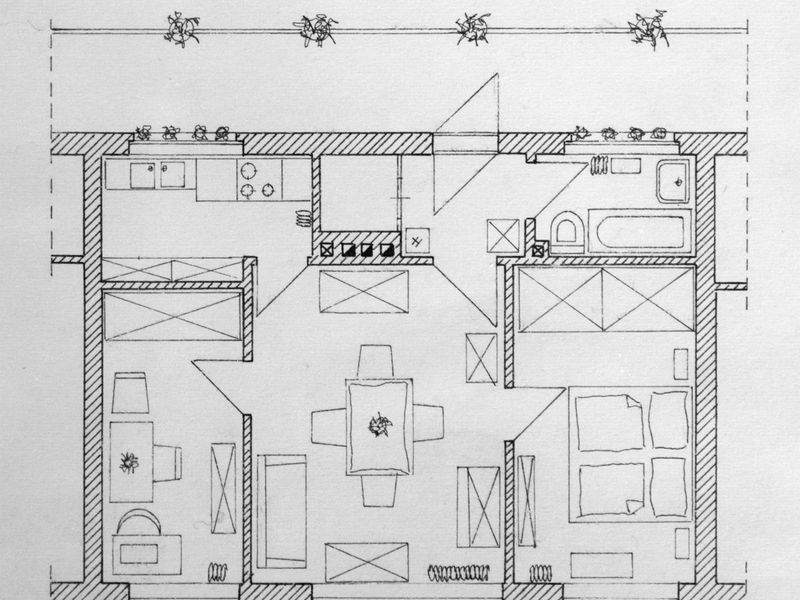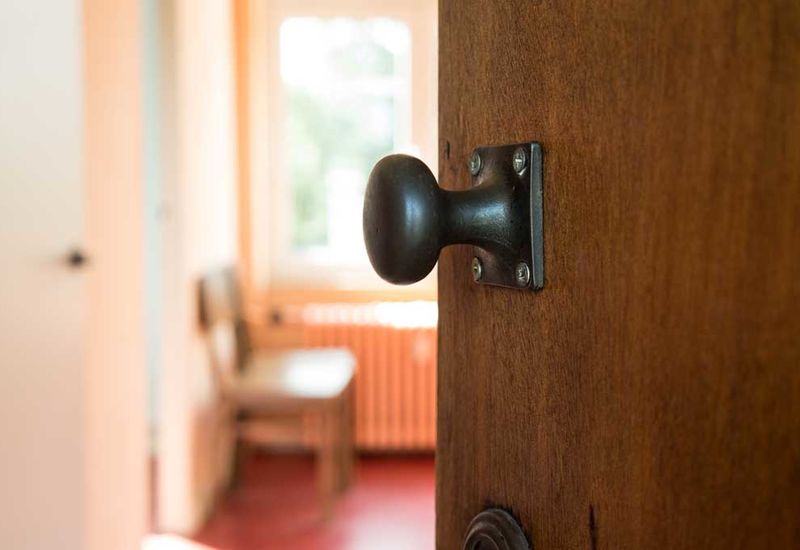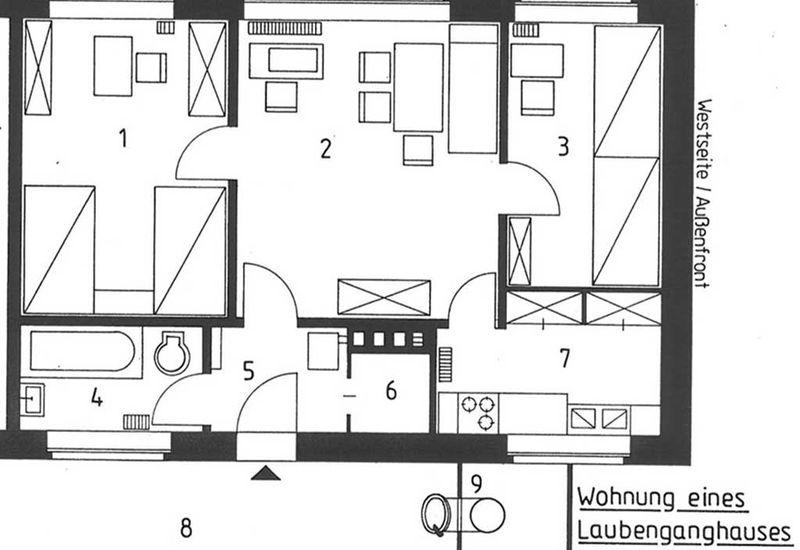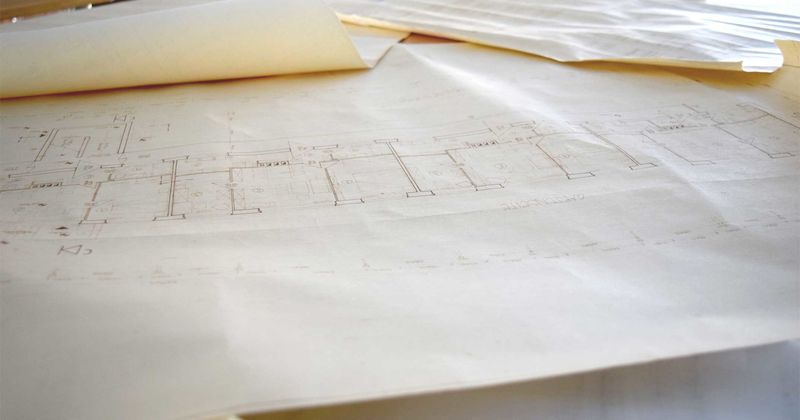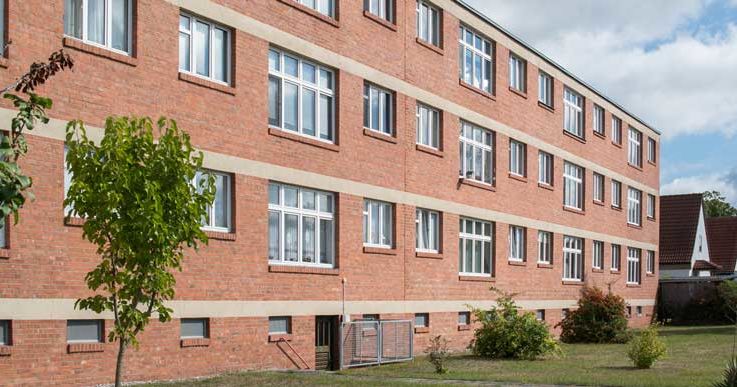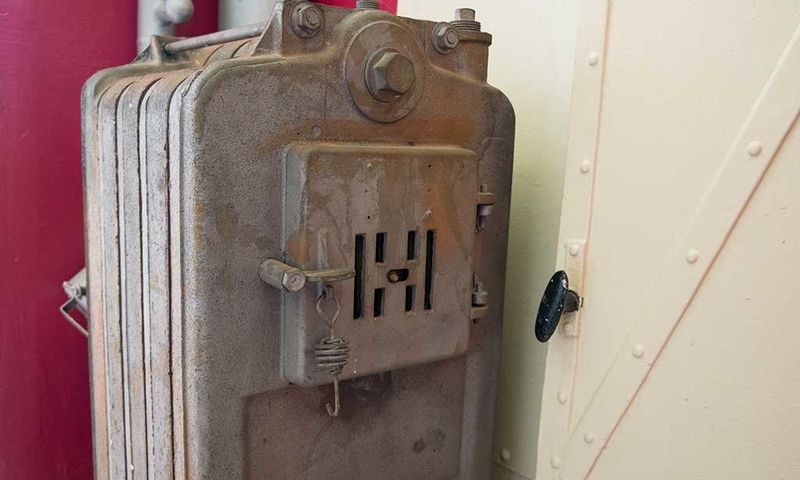the needs of the people instead of a need for luxury
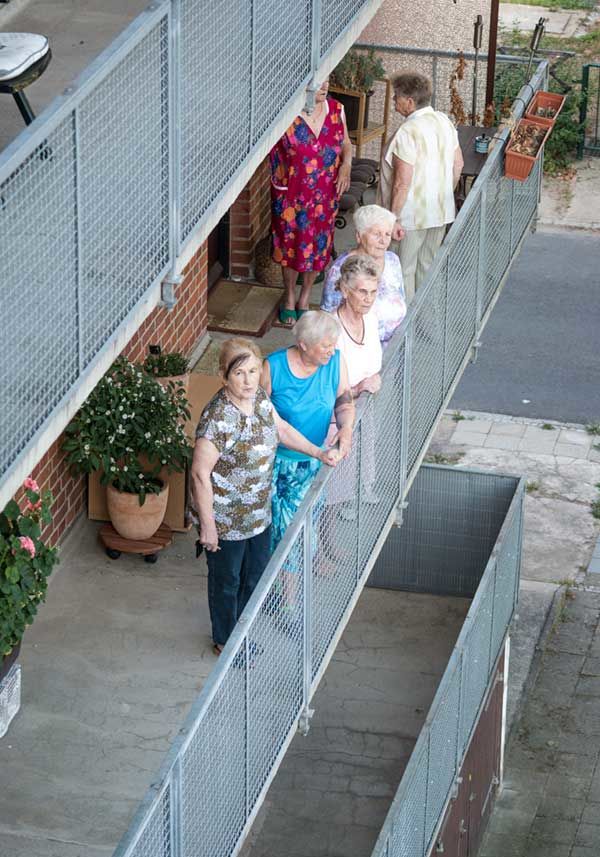
Hannes Meyer
was a progressive-thinking architect of his time. With the arcade houses he tried to create living space that was affordable for all lower social classes (especially workers), i.e. h. Rents should not exceed a quarter of income.
“People’s needs instead of luxury needs” – Meyer placed this topic at the center of his work. From 1929 to 1930 he expanded the Dessau-Törten settlement built by Walter Gropius to include the arcade houses. Multi-family houses with a total of 90 apartments were built, which were accessed via an arcade.
The builder of the arcade houses was the Dessau savings and building cooperative. The execution order was placed at the beginning of 1930 and the five buildings were completed by August of the same year. The construction costs were 8,000 RM (Reichsmark) per apartment. The apartments should not only be inexpensive and quick to build, but also practical and equipped with appropriate comfort." was a progressive-thinking architect of his time. With the "Laubengang" houses he tried
to create living space that was affordable for all lower social classes (especially workers),
i.e. h. Rents should not exceed a quarter of income.
“People’s needs instead of luxury needs” – Meyer placed this topic at the center of his
work. From 1929 to 1930 he expanded the Dessau-Törten settlement built by Walter Gropius
to include the "Laubengang" houses. Multi-family houses with a total of 90 apartments were
built, which were accessed via an arcade.
The builder of the "Laubengang" houses was the Dessau savings and building cooperative. The execution order was placed at
the beginning of 1930 and the five buildings were completed by August of the same year.
The construction costs were 8,000 RM (Reichsmark) per apartment. The apartments should not only be i
nexpensive and quick to build, but also practical and equipped with appropriate comfort.
communal and individual living
created the arcades and the small farm gardens at the house, which made self-sufficiency possible.
The arcade had an additional important function for the residents of the house and became the “living room in summer”.
Today the Dessau eG housing association is the owner of the five “Laubengang” houses. Together with the Dessau-Törten settlement, the buildings represent an important architectural contribution to the work of the Bauhaus in Dessau. Therefore, all five houses are listed buildings.
In the mid-1990s, the "Laubengang" houses were extensively renovated under monument preservation criteria. Particular attention was paid to preserving the houses' original appearance." data-ved="2ahUKEwjDvOG3zZyKAxWUgf0HHWIqK7AQ3ewLegQIDhAU">created the arcades and the small farm gardens at the house, which made self-sufficiency possible.
The arcade had an additional important function for the residents of the house and became the “living room in summer”.
Today the Dessau eG housing association is the owner of the five “Laubengang” houses. Together with the Dessau-Törten settlement, the buildings represent an important architectural contribution to the work of the Bauhaus in Dessau. Therefore, all five houses are listed buildings.
In the mid-1990s, the "Llaubengang" houses were extensively renovated under monument preservation criteria. Particular attention was paid to preserving the houses' original appearance.
